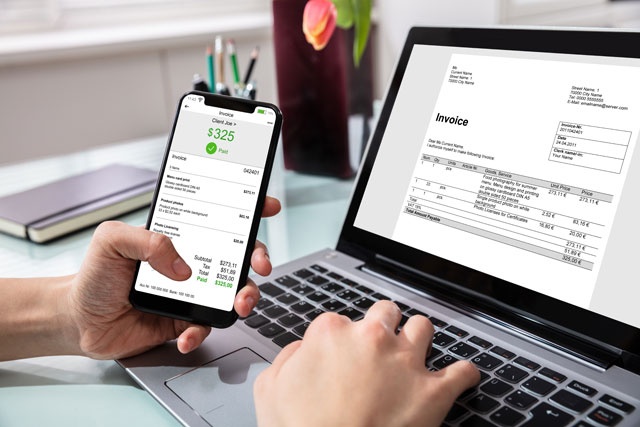Defined as a method for evaluating a customer's eligibility to receive a particular financial product, underwriting follows the lender as they assess the borrower's financial history against the amount requested, opts to either grant or deny financing, and produces the necessary documentation based upon proper procedural guidelines.
Secondly, as is the case with underwriting, at some point in time, the lender anticipates a return on the investment (ROI). This is an important factor as it tracks back to the individual lender's reputation, as well as, that of his lending institution.
According to conventional standards, a borrower with an extensive history of late payments or severe credit deficiencies may prove ineligible to finance. By the same token, individuals who previously defaulted on their mortgages or filed for bankruptcy are also deemed ineligible.
According to more contemporary standards, a borrower who can satisfactorily document the root of their credit problem along with the corrective measures undertaken, they may have an easier time securing a loan than someone who has not taken any steps to rectify the situation.
And, again based upon more contemporary standards, loan seekers who previously declared bankruptcy do not have to completely rule out getting a loan from a reputable lender.
For those with bankruptcy on their records, the possibility of obtaining financing still remains should a) sufficient time have passed (typically two to three years since the discharge of the bankruptcy) and b) efforts have been made to re-establish good credit.
When reviewing a borrower's finances, specifically that of their employment status and income status, to assess their repayment potential, the underwriting considerations include: borrower's occupation, work stability, educational background, opportunities for future advancement on the job and employment financial incentives, for instance commission structures, built-in bonuses, and others.
In the event a borrower's employment history is less than two years, or they were previously in school or in the military, a copy of their diploma, transcript, or discharge papers will be needed to address questions pertaining to continuity of employment.
With respect to borrowers who are employed by a relative, work for a close, privately-owned business, or are considered to be contractual employees, copies of completed, signed tax returns for the most recent two-year period are required.
A favorable risk rating generally is given to a borrower who has demonstrated job stability in their line of work.
Within the risk assessment arena, some degree of job changing is recognized as normal. Frequent and successful job changing because a borrower has outgrown the job opportunities of the previous employer serves to indicate a positive employment trek.
However, a record of unemployment or excess job hopping without advancement often tends to raise concerns about an individual's ability to hold down long term employment and to remain economically stable. In such cases, in order for the borrower to qualify for maximum financing, an underwriter may feel it necessary to offer the borrower a loan with conditions* as a means of offsetting their financial liabilities.
*Note: When underwriters review a borrower's loan application, and they feel that it is missing qualifications needed for granting a perfect loan, the underwriters will call for some condition to be fulfilled prior to loan funding.
With regard to commissions earned either as part time income, overtime, or as part of a bonus structure, these must be verified by the employer for a minimum of a two-year period. Furthermore, typically as a stipulation of underwriting, such verifications may be ongoing and, thus, called upon while going forward into the loan period.
Note: Some lenders opt to average the last three years in cases when the borrower works strictly on a commission basis.
A borrower may also provide documentation verifying the existence of dividends, interest earnings, and additional sources of investment income covering the last two years. Furthermore, with such revenue sources, typically documentation will indicate the continuance of such funding streams.
Proper documentation may include: photocopies of signed tax returns, bank account printouts, brokerage papers, and notarized, signed financial statements.
With respect to RE that serves as an investment, any income derived from rental property must be documented with a lease agreement, signed copies of completed tax returns dating back two years, and, when available, an operating income statement.
Underwriters qualify a borrower's income from investment property by taking an allowance deduction (not less than 25%) from gross rental income for vacancy, rental commission, management fees, and additional expenses. However, should the borrower be able to show zero vacancies for a two-year period and zero management fees, then it is possible for the 25% factor to be waived.
For those borrowers who are self-employed, they will need to provide signed copies of their tax returns from the past two years. Also required are copies of canceled checks for tax payments and, in cases when the loan value exceeds that of 80% of the individual's earnings, a certification from the tax preparer.
Plus, in instances when a self-employed individual has filed for an extension on their recent taxes, a copy of the extension request and copies of canceled checks sent to the Internal Revenue Service should also be included in their loan request package.
For those who own a minimum of 25% or greater ownership interest in a business, the lender may wish to request such information as: signed copies of partnership or corporation income tax returns with applicable schedules for the past two years, a business credit report, and current, audited (if possible) financial statements including internal financing statements in instances when more than four months had elapsed since the end of the last fiscal year.
Over the past few years, loan underwriting has evolved to incorporate the concept of automated underwriting. By merging technology with underwriting, it is now possible to evaluate the risk that a potential borrower poses of defaulting on a loan.




























